Agricultural Products Lists
-
Control methods of red spider in mung bean pest
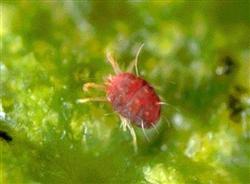
Give priority to chemical control. Strengthen the field inspection, found that the local spot occurred, timely administration of medicine and control. Use 50% malathion EC 1000 times, or 50% dibromophos 2000 times, or 25% deltamethrin 5000 times. Once every 7 days, 2 to 3 times in a row.
2018-09-12 -
Topdressing Technology of Summer Peanut
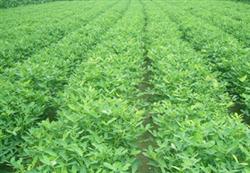
Fertilizing should achieve "two pursuits, one spray and four supplements". Specifically: two topdressing, that is, the first topdressing in front of peanut clumps as early as possible, the amount of fertilizer applied is 10 kg of urea, 15 kg of diamine and 10 kg of potassium chloride; the second topdressing is at the beginning of the expansion period of young fruit, and 10 kg of urea is applied per mu. As soon as it is sprayed, it will be in the late growth period.
2018-09-12 -
Key points of Comprehensive Control of Cotton Seedling Diseases
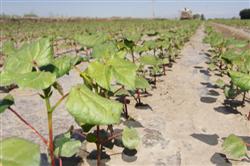
There are many kinds of diseases in cotton seedling stage, among which the most common diseases are yield blight, anthracnose and so on. The incidence rate is generally 20%-30% and 50%-90% in severe cases. Especially in early spring, cotton seedlings grow weakly and emerge slowly, which is easy to be infected by bacteria, causing a large number of rotten seeds and diseased seedlings.
2018-09-12 -
Control techniques of Diseases and insect pests in Cotton Seedling stage
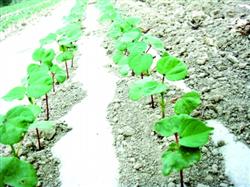
During the transplanting period, cotton seedlings are often affected by abnormal climate, weak seedlings, inadequate cultivation measures and other factors, which slow down the growth process and reduce the yield of cotton. The causes and prevention of cotton stiff seedlings are introduced as follows: first, reason 1. Cotton seedlings.
2018-09-12 -
Don't relax in the prevention and control of diseases and insect pests in cotton flower and boll stage.
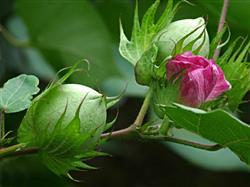
In recent years, the proportion of transgenic Bt insect-resistant cotton accounts for more than 95% of the total cotton planting area in our province. The popularization of insect-resistant cotton has played a strong role in controlling the occurrence and damage of cotton bollworm in cotton field, but some diseases and pests should be prevented and controlled. from the point of view of this year, cotton boll period is a period of interweaving of many kinds of diseases and pests.
2018-09-12 -
Control of bacterial Corner spot in Cotton
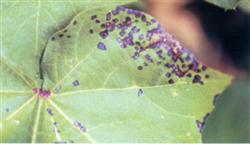
First, agricultural measures. 1. Fine soil preparation, application of sufficient fertilizer, irrigation of soil moisture, and selection of disease-resistant varieties. 2. Reasonable crop rotation and deep winter irrigation to promote the decomposition of diseased and disabled bodies. 3. Strengthen mid-tillage at seedling stage, reduce soil moisture, apply less nitrogen fertilizer, increase phosphorus and potassium fertilizer, and cultivate strong seedlings. 4. Strengthen the management of cotton fields in time after rain.
2018-09-12 -
Measures should be taken to prevent seedling disease from cotton sowing to seedling stage
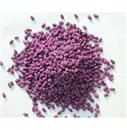
There are more than ten kinds of cotton seedling diseases, such as blight, anthrax, quenching, root rot and so on, which are collectively called cotton seedling disease. The light ones grow slowly, wilt late, and the heavy ones lack seedlings and break ridges, die in pieces, and do great harm. After the occurrence of cotton seedlings, although a series of disease prevention and treatment measures were taken, such as timely release of plastic film cotton, near the root.
2018-09-12 -
Integrated Control techniques of Cotton Diseases and insect pests
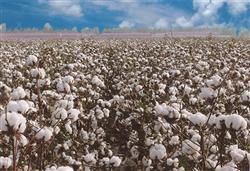
Topdressing is an important measure for cotton to set more bolls, set large bolls, reduce shedding and increase cotton yield. However, if topdressing is not scientific, it will not achieve the desired effect, and sometimes there will be side effects. In production, cotton topdressing has the following four points. First, topdressing according to the law of fertilizer demand. Different growth stages of cotton, to fertilizer.
2018-09-12 -
Scientific Control of Cotton Fusarium Wilt and Verticillium Wilt
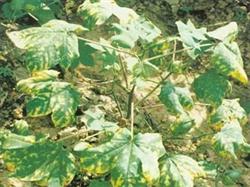
Fusarium wilt and Verticillium wilt are the main diseases affecting the high yield and efficiency of cotton. It is necessary to correctly identify the symptoms and take relative measures to improve the yield and quality and increase the benefit. First, cotton Fusarium wilt: the disease can occur in the cotyledon stage, the first peak occurs in the budding stage, and the symptoms of Fusarium wilt in the seedling stage are complex and diverse.
2018-09-12 -
How to prevent and control rotten cotton and peach
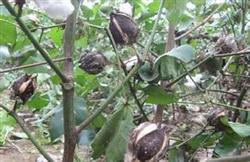
1. Dredge the ditch before and after the rain, timely clean the cotton field drainage ditch, require the ditch to be smooth, ensure that there is no stagnant water in the cotton field when it rains, the ditch can quickly discharge open water after rain, and effectively reduce the underground water level in the cotton field. two。 Pruning and leafing in the late growth stage of cotton can reduce nutrient consumption.
2018-09-12 -
Cotton topdressing should be in advance.
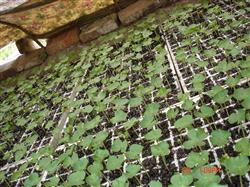
Nutrient bowl seedling bed fertilizer early application of rotten human manure and mature organic fertilizer, appropriate amount of compound fertilizer, generally 10 square meters of seedling bed with 45% nitrogen, phosphorus and potassium content of 0.5-0.7 kg, do not use urea as the base fertilizer of the seedling bed. The base fertilizer of cotton field is to increase the application of all kinds of organic fertilizer, or.
2018-09-12 -
High yield of cotton foliar fertilizer spraying
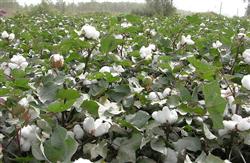
First, foliar spraying nitrogen to prevent premature senility. When the cotton was nitrogen deficient, the leaves were light yellow, the lower leaves were yellow and withered, the fruit branches were few, the flowers and bolls were sparse, and the cotton yield and quality were affected at the initial stage of boll opening. Fertilizer spraying method: prepare 1% urea solution, spray 100 kg per mu, spray once every 7 to 10 days, continuous spraying.
2018-09-12 -
Control of bacterial Corner spot in Cotton
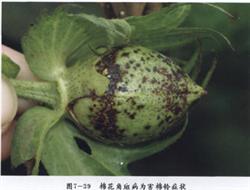
First, agricultural measures. 1. Fine soil preparation, application of sufficient fertilizer, irrigation of soil moisture, and selection of disease-resistant varieties. 2. Reasonable crop rotation and deep winter irrigation to promote the decomposition of diseased and disabled bodies. 3. Strengthen mid-tillage at seedling stage, reduce soil moisture, apply less nitrogen fertilizer, increase phosphorus and potassium fertilizer, and cultivate strong seedlings. 4. Strengthen the management of cotton fields in time after rain.
2018-09-12 -
Prevention and Control of bacterial Corner spot in Cotton
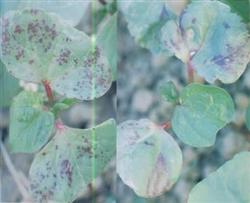
First, agricultural measures. 1. Fine soil preparation, application of sufficient fertilizer, irrigation of soil moisture, and selection of disease-resistant varieties. 2. Reasonable crop rotation and deep winter irrigation to promote the decomposition of diseased and disabled bodies. 3. Strengthen mid-tillage at seedling stage, reduce soil moisture, apply less nitrogen fertilizer, increase phosphorus and potassium fertilizer, and cultivate strong seedlings. 4. Strengthen the management of cotton fields and drain water in time after rain.
2018-09-12 -
Why does cotton have rotten roots?
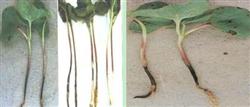
Cotton may have anthracnose, symptoms: cottonseed can be damaged after germination and rot in the soil. The injured light, can also be unearthed, the seedling stem base produced purplish red stripes, and then expanded into a fusiform disease spot, slightly sunken, serious water loss vertical crack, and finally withered the seedlings. The masses call it rotting root disease. There are many disease spots on the cotyledons.
2018-09-12 -
Key measures for management of cotton boll opening period
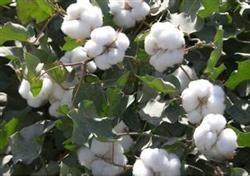
During the boll opening period, high-yield cotton looks precocious and does not senescence prematurely, which requires boll opening in the lower part of the plant, continued flowering in the upper part, and few late buds. The robust growth of cotton, the top fruit branch flat extension, fruit branch length of 20 cm 30 cm, there are 3 buds 4. If the top fruit branch stretches up too long, buds grow, and flowers break too late, it is prosperous and greedy at night.
2018-09-12 -
Key points of cotton management in July
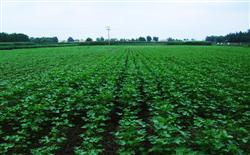
July is the month of the fastest growth and the largest growth of cotton, and it is also the month of drastic weather changes, many disasters and serious diseases and insect pests. Most cotton fields enter the flowering stage in early July, and by the end of July, 90% of the vegetative and reproductive organs of cotton plants have grown.
2018-09-12 -
Causes and control methods of white spike in wheat

Causes and control methods of white spike in wheat
2018-09-12 -
Field Management of Peanut planting

Field Management of Peanut planting
2018-09-12 -
Field Management Measures of Xiantao Cotton in Lower Stage
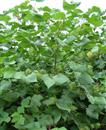
(1) The investigation results of peach planting are as follows: the cotton planting area of professional cooperatives in Chengdu is 104.38 million mu, the average density per mu is 1640 plants, the plant height is 134.9 cm, the fruit branches are 19.7, the mature peach is 15.25, the small peach is 18.03, the flower is 2.4, the bud is 27.56, the shedding rate is 17.66%(the total fruit node is 66.85)...
2018-09-12
